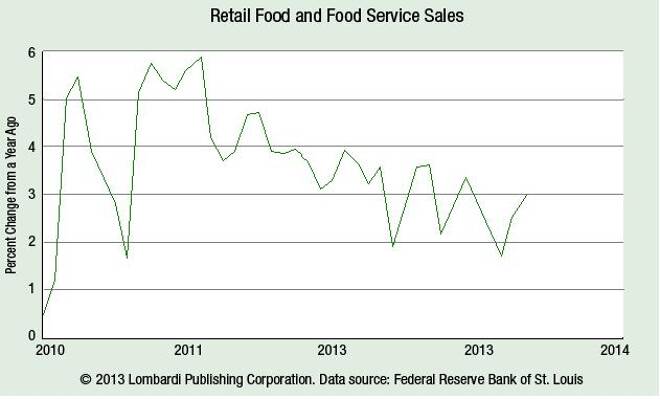Advertisement
Advertisement
Numbers Don’t Lie, and This Is What They Are Telling Me
Updated: Mar 6, 2019, 10:25 GMT+00:00
Face it: there is no real economic growth in the U.S. economy. The only reasons the key stock indices keep rising are nothing more than easy money and
Face it: there is no real economic growth in the U.S. economy. The only reasons the key stock indices keep rising are nothing more than easy money and false optimism. They are anything but a key indicator, and you should not use them as one.
The reality of the U.S. economy is completely the opposite of what’s happening in the markets.
I often say in these pages that economic growth only occurs in the U.S. economy when consumers feel good and spend money. But I see more and more evidence of consumers not spending—many are actually struggling. Don’t buy into the mainstream media’s belief in economic growth.
Instead, look at indicators like the U.S. retail and food services sales for June. They increased 0.4% from the previous month to $422.8 billion and have increased 5.7% from June of 2012. In the second quarter (April through June), retail and food services sales in the U.S. economy were up 4.6% from the same period a year ago. (Source: U.S. Census Bureau, July 15, 2013.)
While that might sound impressive, the chart below will show you something you won’t see the in the mainstream. It shows the percentage change in retail and food services sales from a year ago.
Clearly, the retail sales increases aren’t nearly as amazing as they seem at first glance. The rate of change is actually slower than it was a year ago—and has been trending downward since 2011.
But there’s further proof consumers are not buying. Manufacturing and trade inventories for the month of May have increased 0.1% from April, and 3.8% from a year ago.
And some industries are feeling it worse than others. Inventories at motor vehicle and part dealers were up 12.7%, and inventories for clothing and clothing accessories stores increased 4.6%. (Source: U.S. Census Bureau, July 15, 2013.)
Here’s what is actually happening: consumers in the U.S. economy are spending their money on basic needs. From April to June, consumer spending at gas stations has increased little more than 3.3%.
What’s even more troubling is that crude oil prices have jumped due to tensions in the Middle East. That means that gas prices will soar even higher. And that will result in even more trouble for consumers in the U.S. economy.
On top of all this, contrary to economic growth, Americans have another problem. Instead of getting full-time jobs, many are only able to get part-time work. This year, on average, the number of part-time jobs that have been added each month in the U.S. economy, seasonally adjusted, sits at 93,000. But only about 22,000 full-time jobs have been added. (Source: Wall Street Journal, July 14, 2013.)
Dear reader, I find myself tired of saying this, but numbers don’t lie. They are saying economic growth in the U.S. economy is simply a myth. You must keep in mind that consumers are the driving force behind any economic growth in the U.S. economy. The longer they suffer, the longer it will take the U.S. economy to get back on its feet.
We may see higher corporate earnings from big-cap companies for now. They are buying back their shares, but consumers are the ones who buy their products. The numbers will eventually catch up, and their corporate earnings will suffer.
About the Author
Advertisement
